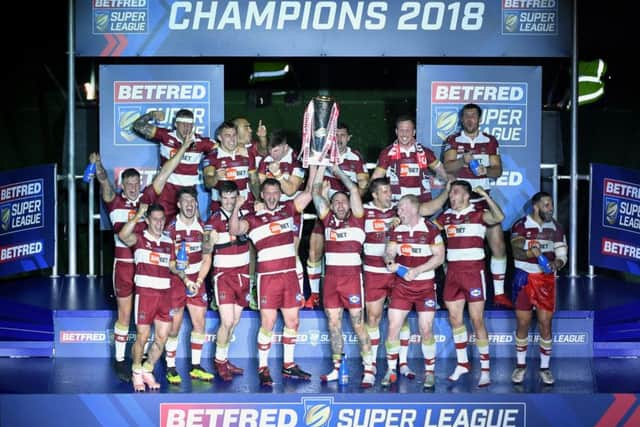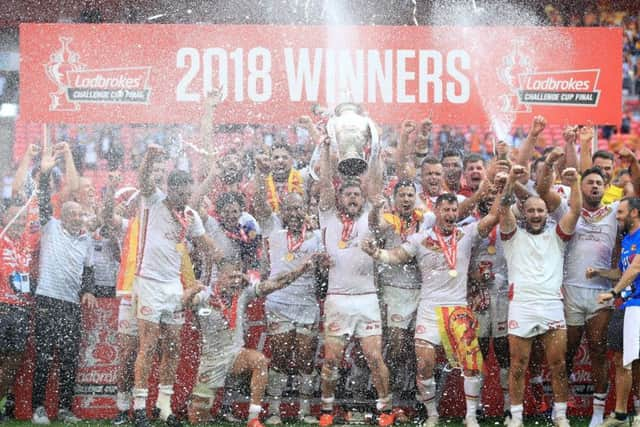Inside RL: Rugby League’s ‘big day out’ is not the attraction it once was


It might have been expected had one or even two of rugby league’s lesser lights reached Wembley, but St Helens and Warrington Wolves are big clubs – in fact, the leading pair in Betfred Super League at the time the final was played.
Rather than the full house it deserved, the official attendance was the lowest for an all-English Cup final since Saints lost to Wigan – in a comparable shock – at Murrayfield 17 years ago (62,140).
Advertisement
Hide AdAdvertisement
Hide AdThere were 12,000 more fans at Wembley last Saturday than for the 2018 showpiece, when Catalans Dragons beat Warrington, but twice as many senior teams in action.


The 1895 Cup final was a new attraction and could develop into something special with a bit of tinkering: scrapping midweek dates for the early rounds and playing the decider as a curtain-raiser to the main event rather than afterwards.
However, assuming roughly 6,000 supporters – 5,000 from Widnes and 1,000 Sheffield Eagles – turned up specifically for the 1895 Cup final, the attendance five days ago looks even worse.
After 2018’s disappointing turnout, Catalans were told they would have to provide a £500,000 bond to protect the Rugby Football League financially in case of a second successive appearance at Wembley. Whether the same is asked of Saints and Warrington remains to be seen.
Advertisement
Hide AdAdvertisement
Hide AdMore than 84,000 spectators were there when Catalans and Saints squared off in the first final at the new Wembley 12 years ago, but the decline since then has been startling.


This year’s gate was 6,000 down from two years ago when Hull played Wigan and more than 13,000 fewer than watched Warrington against Hull in 2016.
As late as the 1980s, the final regularly attracted crowds in excess of 90,000, but the competition has steadily been losing its appeal throughout the summer era and now the Super League Grand Final is a bigger draw.
What can be done about it?
Already, the RFL have confirmed next year’s Challenge Cup final will be played in July which is a step in the right direction, but does not go far enough.
Advertisement
Hide AdAdvertisement
Hide AdThe change, implemented in 2005, to an August final hasn’t worked.
The gaps between rounds are too long and there is fierce competition with other attractions at the height of summer.
Rail closures last weekend on the East Coast main line certainly didn’t encourage Yorkshire-based neutrals to make the trip but, as well as it being peak holiday season, rugby league was up against the Headingley cricket Test, the Ebor horse racing festival in York and a full list of Premier and Football League fixtures.
A return to the final’s traditional spring date, with the opening rounds played in pre- and early-season might revive some interest and give fans, particularly families, more opportunity to attend. The Cup final used to be rugby league’s big day out, attended by supporters of all clubs irrespective of who was playing on the day.
That is no longer the case.
Advertisement
Hide AdAdvertisement
Hide AdMagic Weekend, or the Summer Bash in the Championship, has taken over that mantle and there are also trips to France and Canada on the calendar, with possibly more overseas clubs poised to enter the sport. Also, the Grand Final is played just a few weeks after Wembley, at a much more accessible – for most fans – venue.
With the cheapest tickets priced at £20, the Challenge Cup final is remarkable value, but maybe Wembley is the problem.
So, is it time to consider taking the final somewhere else?
The new stadium lacks the atmosphere of the old ground and a trip to London isn’t the adventure it once was, but Wembley remains sport in this country’s most prestigious venue and the competition would lose even more of its status if the final was moved elsewhere.
Maybe the simple fact is times have changed and, like many things, the Challenge Cup final will never get back to what it once was.
That doesn’t mean there’s no place for it in the calendar.
The Challenge Cup is still a trophy worth winning, but Old Trafford is now the big prize.